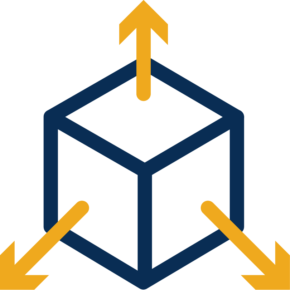Retrieval-Augmented Generation:
What You Need to Know
Retrieval-augmented generation (RAG) is a method of increasing the accuracy and reliability of large language models (LLMs). It reduces AI hallucinations, which is when LLMs produce inaccurate or false responses, by grounding output in external sources. For this reason, RAG is an important capability to look for when evaluating AI platforms for document and data processing.
What Is Retrieval-Augmented Generation?
Introduced by Meta’s AI research team in 2020, retrieval-augmented generation allows large language models to supplement their training data by accessing external information sources. They “retrieve” information from these sources to provide more accurate, reliable outputs.
Using RAG, companies can reduce hallucinations (false information generated by AI that’s presented as fact) and stale information in their AI outputs. This also allows LLMs to provide responses that are domain-specific or tailored to an organization’s knowledge base.
How Does Retrieval-Augmented Generation Work?
RAG is made up of two components: a retriever and a generator.
The retriever locates and extracts relevant information from a vast pool of data. This is the foundation for creating new content.
The generator compiles these findings to create the content. It takes the building blocks from the retriever and organizes them into new information or insights.
Here’s a closer look at how RAG works:
- A user makes a natural language query.
- The retriever searches for data related to the query and identifies the most relevant information.
- The retriever sends this information to the generator.
- The generator combines the retrieved information with the user’s query.
- The generator passes the data to the LLM, which produces a response.
This whole process usually happens in seconds. Users can get quick answers to specific questions, even if they don’t have first-party data to pull from.
Benefits of Retrieval-Augmented Generation
RAG gives companies several advantages compared to AI solutions that don’t use RAG.

Accurate, Up-To-Date Responses
By having access to multiple data sources, RAG can return accurate and updated responses. Instead of relying solely on training data, this approach leverages both existing knowledge bases and real-time data streams to provide the most up-to-date responses possible.

Fewer Hallucinations
Even with accurate data, AI-generated content can sometimes deviate from reality. With RAG, AI models have access to a vast knowledge repository, allowing them to fact-check in real time and ground their outputs in truth.

Increased Trust
Users need to be able to trust the results AI delivers, but this doesn’t usually happen because LLMs are unable to show users how they arrived at their output. RAG allows LLMs to cite its sources for easy verification, creating transparency and instilling a higher level of trust.
Instabase is a great example of this. It can specify where information is located in a document or break down the steps it uses to perform calculations. This multistep reasoning model saves the user from extensive document review. Rather than operating in a black box, users can see how Instabase generated its response and easily check the sources that it used.

Cost-Effectiveness
The computation and financial costs of retraining LLMs are high, but retraining is necessary to keep models up to date. Integrating the ability to pull from external data reduces the need for retraining, making RAG more cost-effective.
Also, since models that use RAG can access external data, there’s no need to train them on large data sets. This shortens the learning curve without sacrificing results and can lead to faster implementation.

Flexibility
RAG provides a high degree of flexibility by making it easier to update LLMs. In order to update a model or adapt it for specific industries or use cases, you need to typically retrain or fine-tune it. With RAG, you can simply update or change the knowledge source, which takes far less time.
Use Cases for Retrieval-Augmented Generation
Because RAG allows LLMs to improve their accuracy and reference external information, the best use cases for RAG are those that involve checking documents or knowledge bases and leveraging real-time data.
Question Answering
RAG is useful in customer-facing applications since it can use a combination of documents, knowledge bases, and product and customer data to provide relevant, accurate, and personalized answers and recommendations. As a result, customers can gain better, more comprehensive answers to questions, leading to improved customer experiences and higher satisfaction. RAG is also immensely helpful for internal needs, as you can use it to answer employee questions about employee benefits, product details, expense reimbursement, and other topics.
All sorts of industries need to quickly answer customer or employee questions. Healthcare, financial services, e-commerce, education, and the public sector are just some industries that would greatly benefit from using RAG for this use case.
Content Creation
RAG is a generative technology, which makes it a helpful tool in creating new content. It can assist with research to speed up the content creation process and generate ad copy, social media posts, contracts, and other types of content.
Industries like legal and marketing have seemingly infinite use cases for content creation. Marketing teams can leverage RAG to generate high-quality content that’s tailored to their audience’s needs, based on the brand’s source material, and incorporates trends or product information.
Creating legal content is complex and time-consuming, given how much research, fact-checking, and careful drafting is needed. RAG enables legal teams to work more efficiently by locating information in lengthy documents, providing summaries and identifying key insights, and drafting clauses or entire documents.
Business Insights and Analysis
The business answers you seek may be buried in the data you already have. But if that data is unstructured or scattered across multiple systems, you’ll struggle to turn that information into usable insights.
RAG solves this by combining the power of retrieval-based models with generative language models to effectively retrieve relevant information from vast amounts of unstructured data and generate insightful analysis in real time. This not only saves time, but also ensures that analysis is accurate and up to date.
All industries can benefit from this use case. Traditional analytics tools may struggle to provide deep insights into intricate business problems, but RAG allows LLMs to sift through a variety of data sources to uncover valuable information that might have been previously overlooked.
Real-Time Reporting
One of RAG’s most notable abilities is reviewing and processing large volumes of data almost instantly. This decreases research and fact-checking time and helps create timely content, which is invaluable to sports, news, and finance companies that rely on sharing timely information with a high degree of accuracy.
Educational Tools
With the ability to accurately answer questions by drawing on a variety of resources and personalize interactions, RAG shows great promise in education. Chatbots that use RAG can provide students with explanations, examples, and further clarification. They can even tailor their responses based on each student’s learning styles and feedback, which results in interactive and engaging learning experiences.
Challenges and Considerations When Using RAG
While retrieval-augmented generation holds high potential, there are a few challenges businesses must address first.
- Data privacy: Because RAG allows LLMs to draw on data and information beyond training data, companies need to make sure that their implementation of RAG complies with data privacy regulations and doesn’t compromise their data.
- Bias: External sources may contain bias, impacting the content that the model produces. Additionally, if there’s bias in the retrieval model, that impacts the content that the retrieval model selects and can lead to inaccurate or misleading outputs.
- Scalability: As data sources grow, RAG models need to handle large datasets without negatively impacting response times and accuracy.
How RAG Is Shaping the Future of Document and Data Processing
RAG is one of the latest innovations in generative AI, but is quickly becoming table stakes with AI-powered document and data processing solutions. Companies like Instabase recognize the immense value that RAG provides and have incorporated RAG into their solutions to increase the reliability and accuracy of their AI. As a result, their clients are able to find information more efficiently and better serve customers and employees.
For example, Instabase uses RAG for its Chatbots product. Companies can quickly build chatbots based on their knowledge bases and share the chatbots with employees, teams, or the entire organization. These chatbots draw on the documents and knowledge uploaded to answer employee questions spanning from HR benefits to product details. This not only reduces the amount of time employees spend poring through documents or waiting on other team members to get back to them with an answer, but also empowers employees to self-service their needs.
RAG has the potential to transform how we retrieve and generate content across a wide range of use cases and industries. While much of RAG’s applications have focused on text data, there’s ongoing development for using RAG for image, audio, and video data too.
Experience the Benefits of RAG
Use Instabase AI Hub to get more accurate, reliable insights from your documents.